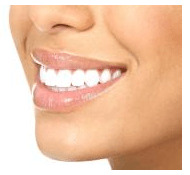This is a question that patients frequently ask, and the reasons why are evident. No one is exactly eager to get a dental checkup, but no one wants to lose any teeth either. For many years, the general consensus among dentists was that all adults should go in for cleanings and screenings twice a year. Now, the issue is being revisited, and the recommendations are being adjusted to suit the needs of the individual.
First, it’s important to remember that prevention reduces tooth loss, period. However, the frequency of your preventative care should be tailored to meet your needs. In short, patients with a high risk for tooth loss need more than two dental checkups per year. Adults without those risk factors are usually okay visiting their dentist just once every 12 months.
Nearly half of all adults over age 30 in the U.S. have a form of chronic inflammatory gum disease. This condition is considered a major risk factor for future tooth loss. Other factors that may place you in the high risk category include smoking, diabetes, and certain genetic factors. Studies have shown that patients in this high risk group are five percent more likely to have a tooth extracted when they get one yearly checkup versus two. For patients in this category, additional checkups throughout the year can decrease the chances of future tooth loss even more.
Low risk patients saw no difference in future tooth loss when they visited the dentist once a year or twice. This has led many dentists to recommend that patients without periodontal disease only come in for checkups once a year. If you are in this category, you can breathe a sigh of relief.
The next time you come in for a screening and tooth cleaning, make sure to ask Dr. Zabolian about the health of your gums and whether or not you are at an elevated risk of future tooth loss. Knowing what category you fall into can help you schedule your future appointments, especially if you need more frequent visits to keep your teeth healthy well into the future.









 Yelp
Yelp I have never had a better dental experience prior to my visit with Dr. Zabolian. It was pain free for the first time ever, the staff was friendly, accommodating to my schedule, there were no problems with my insurance claims... I am so happy I have found a dentist (after all these years) I feel so comfortable going to and also taking my family.
I have never had a better dental experience prior to my visit with Dr. Zabolian. It was pain free for the first time ever, the staff was friendly, accommodating to my schedule, there were no problems with my insurance claims... I am so happy I have found a dentist (after all these years) I feel so comfortable going to and also taking my family. 






